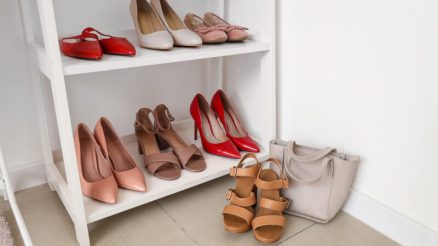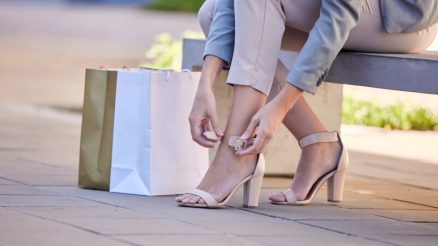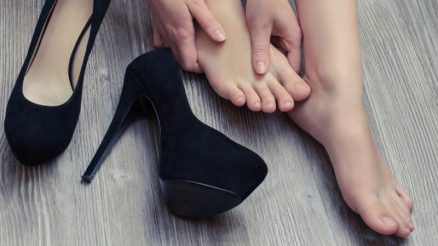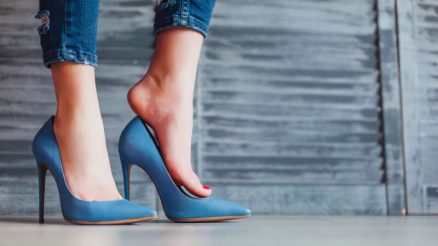There’s nothing quite like the feeling of slipping on a gorgeous pair of heels – until, that is, the dreaded friction begins, leading to painful blisters. Whether you’re heading to a special event, a night out, or just trying to elevate your everyday style, heel blisters can quickly turn a fabulous experience into a miserable one. But fear not! With the right knowledge and a few simple strategies, you can significantly reduce your chances of developing these unwelcome sores.
This comprehensive guide will walk you through everything you need to know to keep your feet happy and blister-free, even in your highest heels.
Understanding the Enemy: What Causes Blisters?
Before we dive into prevention, let’s briefly understand what a blister is. A blister is a small pocket of fluid (serum, plasma, blood, or pus) that forms in the upper layers of the skin, typically caused by repetitive friction or pressure. When your heels rub against the stiff material of your shoes, especially new or ill-fitting ones, the skin can separate from the layers beneath, and fluid fills the space, creating that painful bubble.
The key to prevention lies in minimizing this friction and pressure.
The Foundation: Proper Shoe Fit is Paramount
This is arguably the most crucial step. No amount of padding or protection will fully compensate for a poorly fitting shoe.
- Shop Smart, Shop Late: Your feet swell throughout the day. Shop for shoes in the late afternoon or evening when your feet are at their largest. This ensures a comfortable fit that won’t become too tight later.
- Measure Regularly: Foot size can change over time due to various factors like age, weight fluctuations, or pregnancy. Get your feet measured periodically, especially if you haven’t done so in a while.
- Don’t Rely on “Breaking In”: While some shoes need a little breaking in, they should never be painful from the start. If a shoe feels uncomfortably tight or rubs excessively in the store, it’s likely not the right fit for you. A good fit means snug but not restrictive, with enough room for your toes to wiggle.
- Consider the Shape: Ensure the shoe’s shape matches the natural shape of your foot. Pointy toes on a wide foot are a recipe for disaster.
- Heel Grip: Your heel should feel secure in the shoe without slipping excessively. Too much slippage causes friction.
The “Break-In” Period: A Gentle Introduction
Even perfectly fitting new heels can be stiff. A proper break-in period is essential to soften the material and allow the shoe to mold to your foot.
- Wear Them Around the House: Start by wearing your new heels for short periods around your home. Increase the duration gradually.
- Thick Socks Method: Wear thick socks with your new heels around the house. This can help stretch the material slightly and provide extra cushioning.
- Targeted Stretching: If you feel a specific tight spot, you can use a shoe stretcher or take them to a cobbler for professional stretching.
The Barrier Method: Creating a Protective Layer
Once you have well-fitting shoes, the next line of defense is to create a barrier between your skin and the shoe.
- Blister Prevention Sticks/Balms: These waxy sticks (like Body Glide or Compeed Anti-Blister Stick) create an invisible, friction-reducing layer on your skin. Apply them generously to areas prone to rubbing, especially your heels.
- Moleskin or Blister Pads: These adhesive pads can be cut to size and applied directly to your skin before you feel any rubbing. They act as a second skin, absorbing friction. There are also specific heel liners designed for this purpose.
- Band-Aids/Tapes: While not as durable as moleskin, a well-placed, strong adhesive bandage or athletic tape can offer temporary protection. Ensure it’s smooth and doesn’t wrinkle.
- Silicone Heel Protectors: These soft, gel-like sleeves slip over your heel, providing a cushioned barrier. They are reusable and can be very effective.
Foot Care: Prepping Your Feet for Success
Healthy feet are less prone to blisters.
- Keep Feet Dry: Moisture increases friction. If your feet tend to sweat, consider using foot powder or antiperspirant on your heels before putting on your shoes.
- Moisturize Regularly (But Not Immediately Before Wearing Heels): Keep your skin hydrated and supple. Dry, cracked skin is more vulnerable to damage. However, avoid applying heavy moisturizers right before wearing heels, as this can make your feet more prone to slipping and friction.
- Trim Toenails: Long toenails can push your foot forward, increasing pressure points.
Material Matters: Choosing Wisely
The material of your shoes and socks can significantly impact blister prevention.
- Breathable Shoe Materials: Leather and suede are generally more breathable and mold to your foot better than synthetic materials, which can trap heat and moisture.
- Avoid Cotton Socks (If Wearing Any): If you opt for socks or hosiery with your heels, choose moisture-wicking materials like synthetic blends or wool. Cotton absorbs sweat and stays wet, increasing friction.
- Seamless Socks/Hosiery: Seams can cause irritation and rubbing. Opt for seamless options if possible.
When All Else Fails: What to Do If a Blister Forms
Despite your best efforts, a blister might still appear.
- Small, Unbroken Blisters: Leave them intact! The skin acts as a natural sterile bandage. Cover it with a soft bandage or a specialized blister plaster (which provides cushioning and a healing environment).
- Large, Painful, or Broken Blisters: If a blister is very large, painful, or has already broken, you might need to drain it to relieve pressure. Sterilize a needle with rubbing alcohol, gently puncture the edge of the blister, and allow the fluid to drain. Do not remove the overlying skin. Cleanse the area with antiseptic and cover it with a sterile bandage.
- Seek Medical Attention: If you notice signs of infection (redness, pus, increased pain, fever), consult a doctor.
Conclusion
Preventing blisters from heels is a multi-faceted approach that combines smart shoe choices, proper break-in techniques, protective barriers, and good foot hygiene. By implementing these strategies, you can confidently step out in your favorite heels, knowing that your feet will thank you for it. Say goodbye to painful blisters and hello to comfortable, stylish strides!








